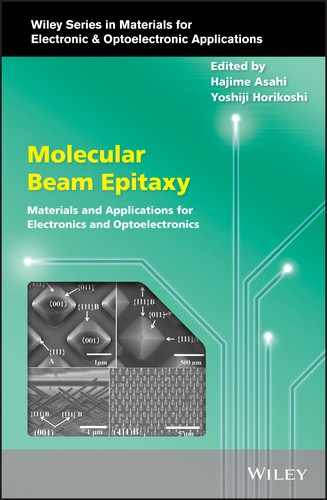Book Description
Covers both the fundamentals and the state-of-the-art technology used for MBE
Written by expert researchers working on the frontlines of the field, this book covers fundamentals of Molecular Beam Epitaxy (MBE) technology and science, as well as state-of-the-art MBE technology for electronic and optoelectronic device applications. MBE applications to magnetic semiconductor materials are also included for future magnetic and spintronic device applications.
Molecular Beam Epitaxy: Materials and Applications for Electronics and Optoelectronics is presented in five parts: Fundamentals of MBE; MBE technology for electronic devices application; MBE for optoelectronic devices; Magnetic semiconductors and spintronics devices; and Challenge of MBE to new materials and new researches. The book offers chapters covering the history of MBE; principles of MBE and fundamental mechanism of MBE growth; migration enhanced epitaxy and its application; quantum dot formation and selective area growth by MBE; MBE of III-nitride semiconductors for electronic devices; MBE for Tunnel-FETs; applications of III-V semiconductor quantum dots in optoelectronic devices; MBE of III-V and III-nitride heterostructures for optoelectronic devices with emission wavelengths from THz to ultraviolet; MBE of III-V semiconductors for mid-infrared photodetectors and solar cells; dilute magnetic semiconductor materials and ferromagnet/semiconductor heterostructures and their application to spintronic devices; applications of bismuth-containing III–V semiconductors in devices; MBE growth and device applications of Ga2O3; Heterovalent semiconductor structures and their device applications; and more.
- Includes chapters on the fundamentals of MBE
- Covers new challenging researches in MBE and new technologies
- Edited by two pioneers in the field of MBE with contributions from well-known MBE authors including three Al Cho MBE Award winners
- Part of the Materials for Electronic and Optoelectronic Applications series
Molecular Beam Epitaxy: Materials and Applications for Electronics and Optoelectronics will appeal to graduate students, researchers in academia and industry, and others interested in the area of epitaxial growth.
